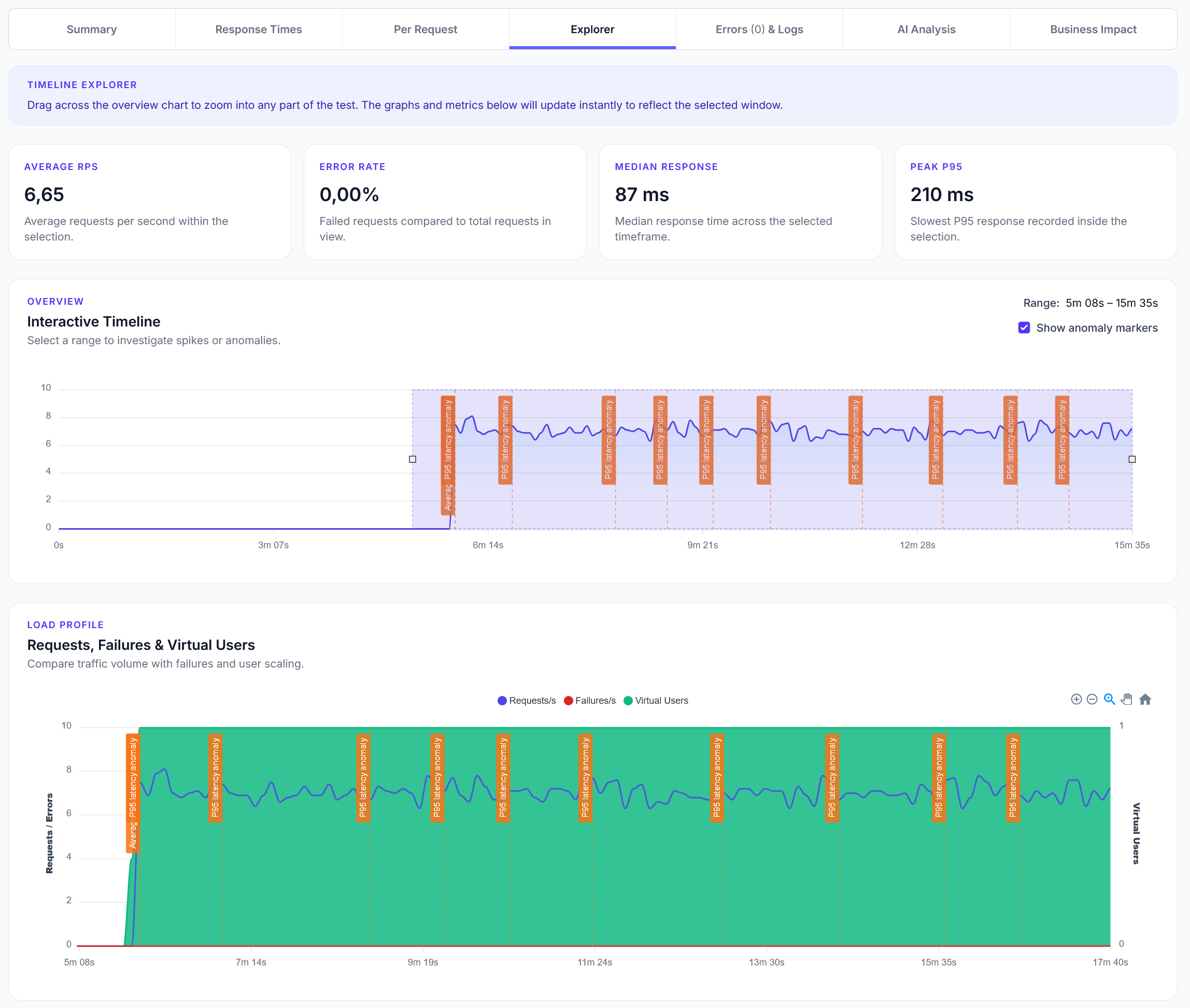
Explorer reports addition
We have added a new Explorer feature to reports, with a timeline scrubber and easy anomaly detection.
Basic rate limiting testing with simple backoff when hitting API limits
LoadForge can record your browser, graphically build tests, scan your site with a wizard and more. Sign up now to run your first test.
This guide shows how to handle API rate limits with simple backoff strategies. Perfect for APIs that return 429 status codes when limits are exceeded.
from locust import task, HttpUser
import time
import random
class RateLimitUser(HttpUser):
def on_start(self):
self.backoff_until = 0 # Track when to resume requests
self.rate_limit_count = 0
@task(5)
def test_api_with_rate_limits(self):
"""Test API endpoint that has rate limits"""
# Check if we're in backoff period
if time.time() < self.backoff_until:
print("Skipping request - in backoff period")
return
with self.client.get("/api/data", name="Rate Limited API") as response:
if response.status_code == 200:
print("Request successful")
# Check rate limit headers
remaining = response.headers.get("X-RateLimit-Remaining")
if remaining:
print(f"Requests remaining: {remaining}")
# Warn if getting close to limit
if int(remaining) < 5:
print("WARNING: Approaching rate limit!")
elif response.status_code == 429:
# Rate limited - implement backoff
print("Rate limited! Backing off...")
self.rate_limit_count += 1
# Get retry-after header or use default
retry_after = response.headers.get("Retry-After", "60")
backoff_time = int(retry_after)
# Set backoff period
self.backoff_until = time.time() + backoff_time
print(f"Backing off for {backoff_time} seconds")
response.failure(f"Rate limited - backing off for {backoff_time}s")
else:
response.failure(f"Request failed: {response.status_code}")
@task(2)
def test_search_api(self):
"""Test search API with rate limits"""
if time.time() < self.backoff_until:
return
search_terms = ["test", "product", "user", "data"]
query = random.choice(search_terms)
with self.client.get(f"/api/search?q={query}", name="Search API") as response:
if response.status_code == 200:
print(f"Search for '{query}' successful")
elif response.status_code == 429:
print(f"Search rate limited")
# Simple backoff
self.backoff_until = time.time() + 30 # 30 second backoff
response.failure("Search rate limited")
else:
response.failure(f"Search failed: {response.status_code}")
@task(1)
def check_rate_limit_status(self):
"""Check current rate limit status"""
if time.time() < self.backoff_until:
remaining_backoff = self.backoff_until - time.time()
print(f"In backoff for {remaining_backoff:.0f} more seconds")
else:
print("No active backoff - ready for requests")
if self.rate_limit_count > 0:
print(f"Total rate limits hit: {self.rate_limit_count}")
/api/data and /api/search with your actual API endpointsCommon headers to check:
X-RateLimit-Remaining: Requests left in current windowRetry-After: Seconds to wait before retryingX-RateLimit-Reset: When the limit resetsWhen rate limited (429 response):
Retry-After headerRetry-After header